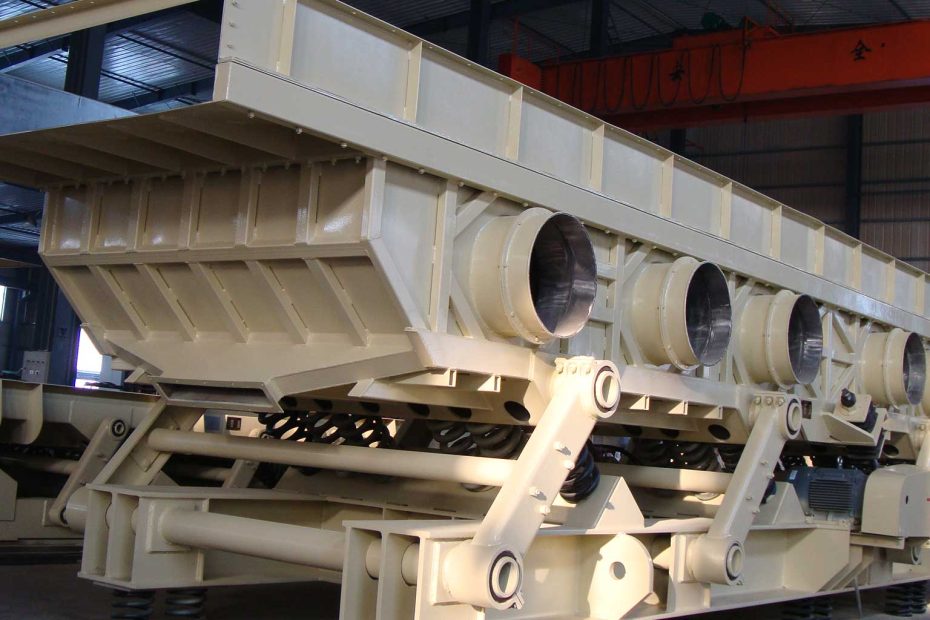Vibrating conveyors are a critical component of many material handling systems. They use vibrations to move materials from one place to another in a safe, efficient, and cost-effective manner. A vibrating conveyor consists of several components that work together to maintain the necessary vibration and transport the material.
Components of a Vibrating Conveyor
- Drive Unit: The drive unit is the power source of the vibrating conveyor. It typically consists of an electric motor attached to an eccentric weight. The vibration of the eccentric weight creates the necessary motion of the conveyor.
- Pan: The pan is the conveying surface of the vibrating conveyor. It can be made of various materials, such as stainless steel, mild steel, or plastic. The pan’s size and shape are determined by the application’s specifications.
- Springs: The springs are the components that provide the conveyor’s suspension and stabilizing force. The type and number of springs vary depending on the conveyor’s length and weight.
- Head and Tail Pulleys: The head and tail pulleys are rotating components located at each end of the vibrating conveyor. They are responsible for guiding the conveyor belt and maintaining tension in the belt.
- Bearings: The bearings are the components that support the rotating pulleys and the eccentric weight of the conveyor. High-quality bearings are essential to prevent excessive wear and damage to the conveyor.
Summary of Vibrating Conveyor Components and Functions
| Component | Function |
|---|---|
| Drive Unit | Provides the power source for the conveyor to generate the necessary vibration |
| Pan | The conveying surface for the conveyor |
| Springs | Provides suspension and stabilizing force for the conveyor |
| Head and Tail Pulleys | Guides the conveyor belt and maintains tension in the belt |
| Bearings | Supports the rotating pulleys and eccentric weight of the conveyor |
How Vibrating Conveyors Work
The operation of a vibrating conveyor relies on the vibration created by the eccentric weight attached to the motor. As the weight rotates, it creates a centrifugal force that produces vibration. This vibration transfers to the pan and the material being conveyed, causing it to move forward. The springs help to absorb some of the shock and provide stability to the conveyor’s motion. As the material reaches the end of the conveyor, the head and tail pulleys guide the belt and maintain tension, allowing the conveyor’s motion to continue.
Conclusion
Vibrating conveyors are an essential component in many material handling systems and consist of several critical components that work together to maintain the appropriate vibration and transport materials from one location to another. These components include the drive unit, pan, springs, head and tail pulleys, and bearings. Understanding how these components work together is vital to ensuring the smooth and efficient operation of the vibrating conveyor. With proper maintenance and attention to each component, operators can ensure that the conveyor functions optimally and reduces the chance of breakdown or downtime.
